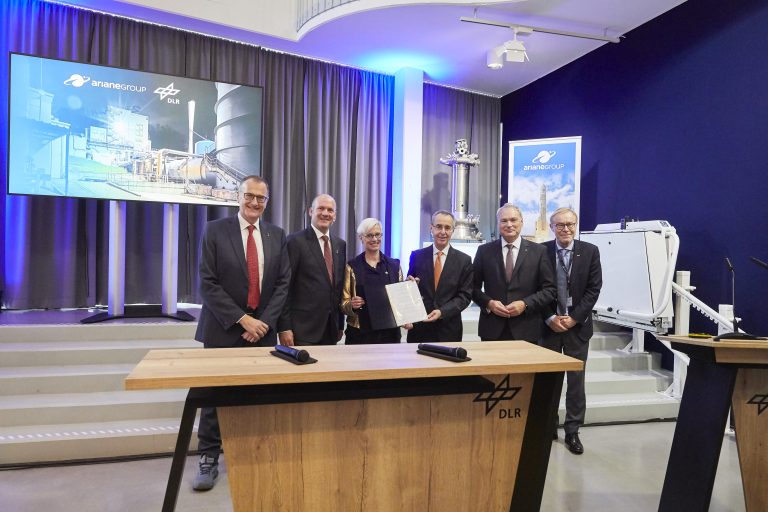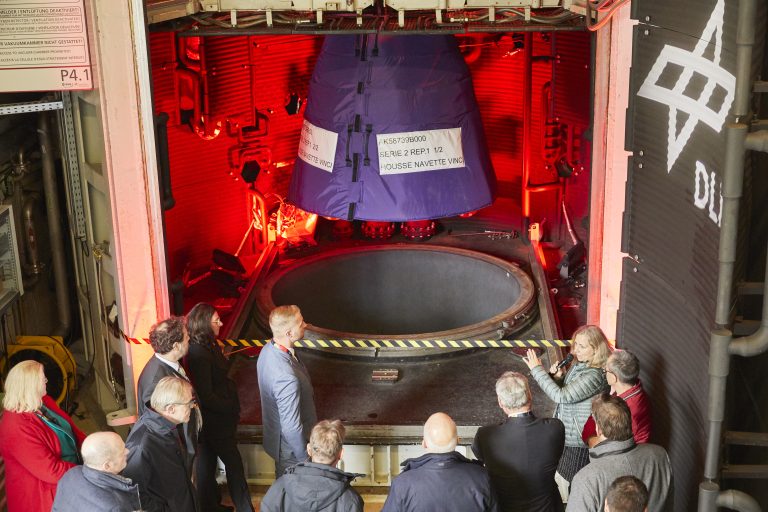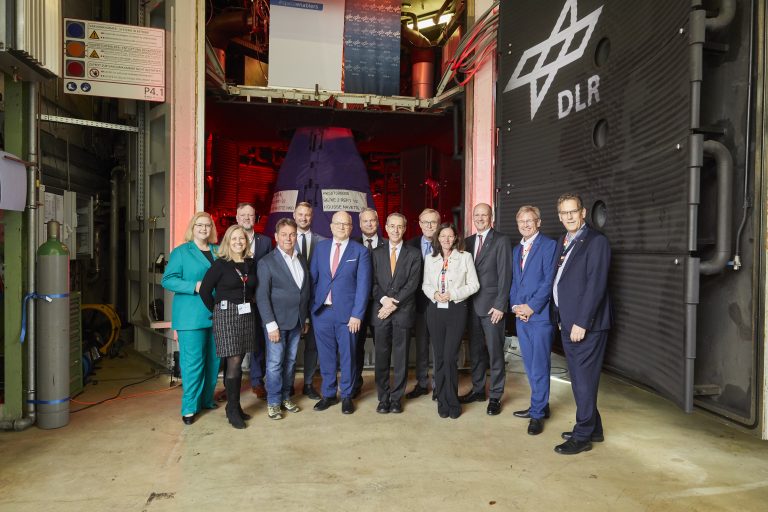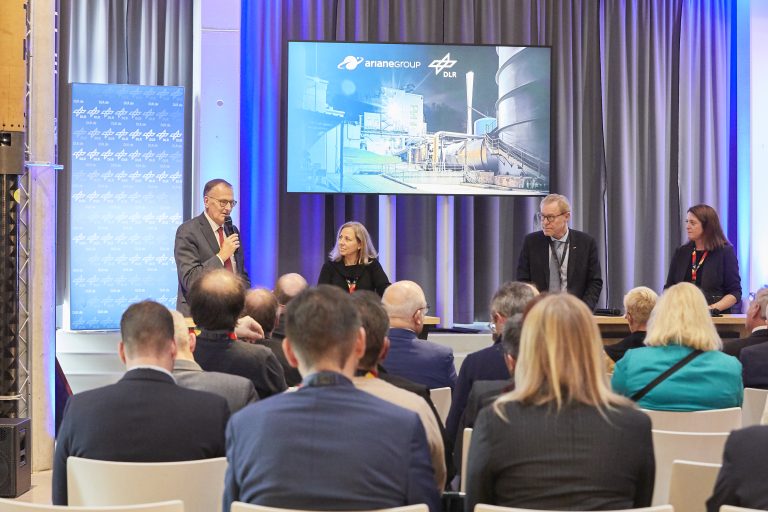ArianeGroup prepares for Vinci engine integration and acceptance testing at the Lampoldshausen site in Germany
24.10.2025

Implementation of an agreement between ArianeGroup and the German Aerospace Center (DLR) for the series production of Ariane 6. ArianeGroup will carry out the integration and acceptance testing of the Vinci engine that powers the Ariane 6 upper stage in Lampoldshausen, Germany.
ArianeGroup and the German Aerospace Center (DLR) are implementing an agreement under which the integration and acceptance testing of the Vinci engine will be carried out at the Lampoldshausen site in Germany. The plans for the new production building were unveiled on October 24, in the presence of representatives from ArianeGroup, DLR, and the European Space Agency (ESA), which is supporting the agreement’s rollout. This new industrial framework for the Vinci engine will foster synergies while ensuring the ramp-up of Ariane 6 production, thereby securing Europe’s independent access to space.
“The Vinci engine truly embodies ArianeGroup’s Franco-German DNA. The engine’s design and key technologies come from Vernon in Normandy, while the combustion chambers are developed and built in Ottobrunn, near Munich. Bringing the engine’s integration to Lampoldshausen reflects the success of our cooperation with DLR and ESA, and reaffirms our ambition for a sovereign and united European space industry.”
Walther Pelzer, Member of the DLR Executive Board and Director General of the German Space Agency, said: “We have every reason to welcome this agreement, which marks the start of seamless integration and testing of the Vinci engine. It represents a strong commitment to Germany in the field of advanced technologies, guaranteeing not only highly qualified jobs, but also strengthening our technological sovereignty. The Vinci engine plays a decisive role in Europe’s access to space and enhances our capacity for innovation.”
Vinci is Europe’s very first re-ignitable cryogenic engine. It incorporates major technological advances and delivers significantly enhanced performance. The engine can be restarted up to five times, providing the flexibility needed for missions involving multiple orbital maneuvers. In the future, up to twelve Vinci engines could be assembled and tested each year in Lampoldshausen before being delivered to Bremen for integration into the Ariane 6 upper stage.
In parallel, the development and production of the liquid oxygen turbopumps for both the Vinci and Vulcain 2.1 engines will be carried out at the site in Vernon. This new allocation of tasks is consistent with the agreement signed in December 2024 by France, Germany, Italy, and the European Space Agency, implementing the decisions taken at previous ESA Ministerial Council meetings.


